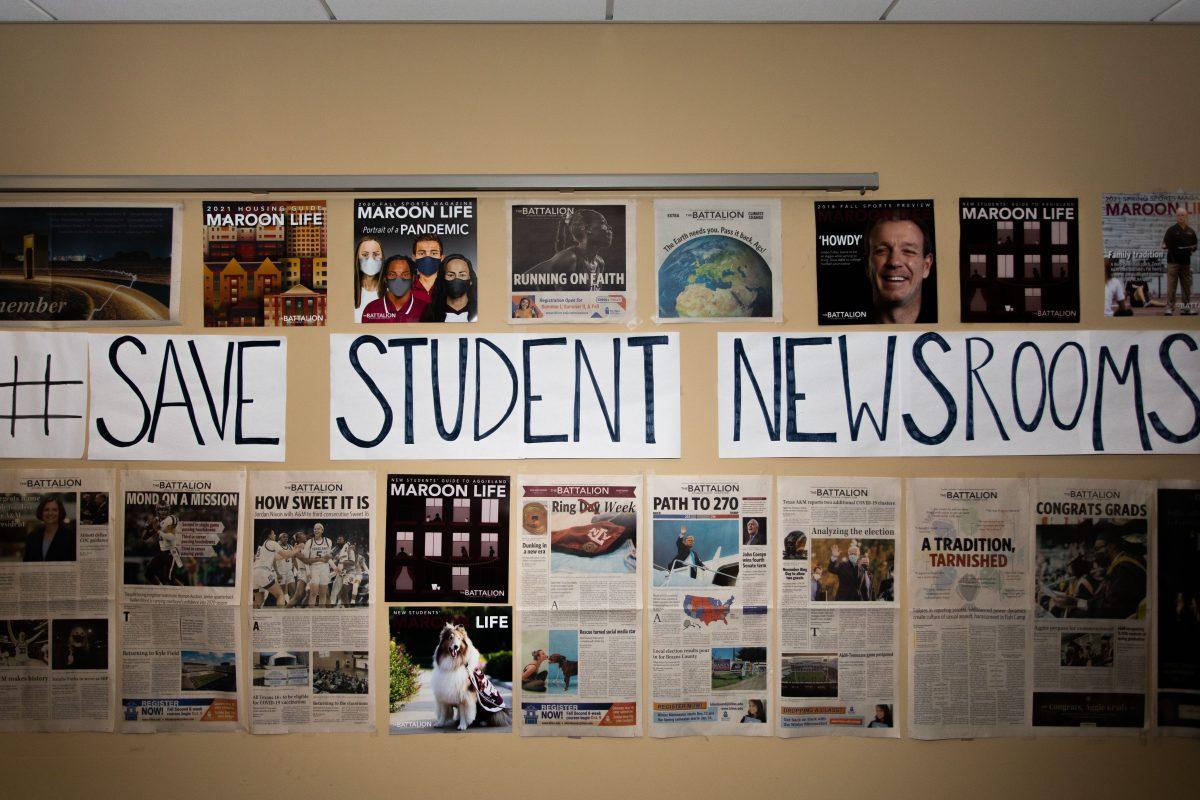In the largest Disaster Day yet, students throughout A&M’s Nursing School and related colleges lived through a desperate medical narrative yesterday. In two training exercises, trainees were presented with the scenario of a wildfire and fuel tank explosion that left over a hundred casualties with burns, blood loss and trauma.
“[Our] goals are to improve the outcomes of patients by allowing our students to learn whether they successfully treat a patient or if they make a mistake,” Cooper said. “We do have debriefing sessions after the simulations and, no matter what, they’re going to be constructive for each student, and we’re going to take away learning points.”
To create a more realistic experience in treating injuries such as burns, wounds and fractures, stage make-up was applied to the victims, played by volunteers. Caretaker students dealt with a wide spectrum of medical emergencies, from cardiac arrest to child birth.
Callie Davis, nursing senior, said the actors stuck to their scripts and made the experience as realistic as possible.
“It definitely helps to get to apply it in quick situations like this where it’s like real life,” Davis said. “The actors really played their parts well and they didn’t cut us any slack.”
Cooper said volunteers have to strictly follow their “cases,” or scripts detailing the victim’s medical problems, in the order they unfold.
“If the nurses and the doctors and the pharmacists do the right interventions, the patient may get better,” Cooper said. “If something is not corrected in that time frame, the patient is going to decline and then at some point the patient may start to have a heart attack, may have a seizure or possibly may even die.”
This year’s Disaster Day included several new players — representatives from the School of Public Health, the College of Veterinary Medicine and Biomedical Sciences’ Veterinary Emergency Team worked alongside nursing students.
“This year the School of Public Health is involved. They have [an] interesting role — they’re going around and looking for people who break infection control measures, or who have bad posture when moving and manipulating patients,” Cooper said. “We also have vet-med outside. We’re just trying to get really interdisciplinary so that everybody can communicate and work better together.”
Angela Mountain, a College of Nursing faculty advisor for Disaster Day, said students need to be able to work well with a team.
“They need to be able to prioritize patients, they need to be able to respond if there’s an incident, so we want to make sure that they can address who’s the most important patient and where are they needed,” Mountain said.
Brooke Morgan, student in the College of Nursing, said the gym was quartered into four pods — groups of healthcare students — that functioned independently.
“Each pod has a charge nurse, it has its set of staff nurses, it has its attending physician, and they are their own unit,” Morgan said. “Before they came out they were in a team building room and they were discussing how they were going to run their unit and the roles that each person was going to be having.”
The day’s schedule ran through student team building sessions and two disaster simulation sessions followed by debriefings and a presentation by a Red Cross speaker.
Trisha Sheridan, assistant professor in the College of Nursing and faculty advisor to Disaster Day, said the event was sponsored by the A&M Health Science Center, the American Red Cross, USMD Health System and local businesses.









